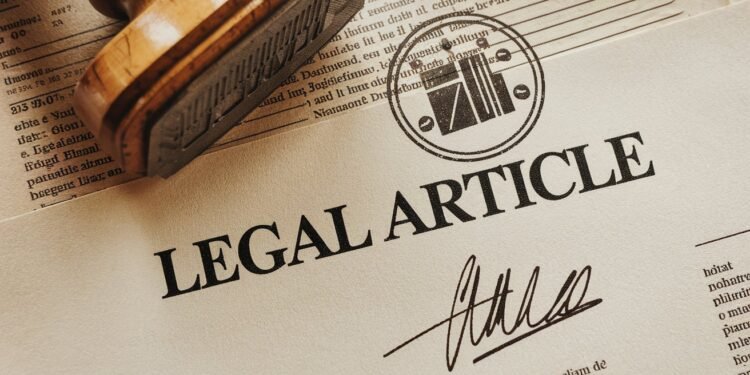Diksha Dubey from Law College Dehradun Faculty of Uttranchal University
ABSTRACT
Prisonization symbolizes a system of punishment and an institutional place for undertrials and suspects during their trial period, every country of the modern world follows this system and its use has also been growing rapidly. According to the World Prison Brief database on prisoners published in 2021, there are around 11.5 million prisoners worldwide, and according to the National Crime Records Bureau, Ministry of Home Affairs there are 1319 prisons in India, with an actual capacity of 425,609 prisoners, but looking at the figures 554034 inmates are in prisons, out of which 2.8 lakh prisoners are under trial which is equal to the population of a country Barbados. During this research, the researcher carried out the study based on primary and secondary data gathered from various sources, books, journals, newspapers and judicial proceedings. This paper aims to examine the judicial attitudes towards the Indian Prison system. The purpose of this study is to analyze the rights of prisoners under Indian law. This article covers the historical background, constitutional and statutory provisions of the prisoners, supported by case laws. Moreover, the rights enjoyed by Prisoners under Article 14, 19 and 21 will rise to human rights when a challenging situation arises. This paper also highlights the delivery of effective treatment to a variety of populations within the prison system. A scientific method for accomplishing the intended benefit of punishment is correction. Though the prisoner is always the centre of attention in order to reformulate his attitude and habits, the use of scientific techniques and practical programming must be applied so that, upon release, he may live a law-abiding life. As, the improved methods of managing prisons cannot be developed due to economic limitations, the Indian prison system is not any better and the need for prison reconstruction has to receive top priority.
Keywords : undertrial prisoners, speedy-trial, prisonization
EVOLUTION OF THE CONCEPT OF PRISON
The word ‘Prison’ derived from the Latin word which doesn’t means “to use sudden force” or “to cage”. Prison is an old age foundation, and a place properly arranged for those culprits to be kept safe in custody while going through legal process in trial or for punishment.
Lord Macaulay in his book “Minutes of 1835” said that, “Imprisonment is the punishment to which we must chiefly trust”. He was the one who put the idea for the establishment of such rules and regulations, the main aim was to destroy criminal streak among convicted offenders. If we turn the pages of our history, we see that the structure of society at that time was based on the principles laid down by Manu which was further explained by Yajnavalkya, Kautilya and others. However, it is also on record that Brahaspati laid stress on imprisonment of convicts in closed prisons whereas, Manu was against this system. Kautilya on other hand in his Arthashastra mentioned that rulers made frequent use of fortresses to lodge their prisoners. He was of the opinion that as far as practicable prisons should be constructed along the road side to reduce the monotony of prison-life. It can be well said that in ancient India spiritualism was given greater emphasis and so prisons were so modelled as to provide sufficient opportunity for penance and expostulation. Therefore, it can also be said that it was a common parlance to keep prisoners in solitary-confinement for the process of self-examination. During the Medieval period, the deterrent theory of punishment was practiced. In the Mughals administration the prisoners were not only ill-treated but all sorts of inhumane practices were prevalent.
The penal reforms in India were marked with the beginning of British colonial rule. The British prison authorities made strenuous efforts to improve the condition of Indian prisons and prisoners. In 1836, the Prison Enquiry Committee was appointed by the Government of India, recommending for the abolition of practice of prisoners working on roads. The second Jail Enquiry Committee established in the year 1862, expressed concern for the proper sanitary facilities. With all these committee’s recommendations in the year 1894, the Prison Act was enacted for bringing uniformity in the working of prisons in India and provided for certain prisoners’ rights :
- Accommodation and sanitary conditions for prisoners.
- Provisions related to mental and physical state of prisoners.
- Examination of prisoners by qualified medical officers.
And many other rights, from this period onwards it got in the light by the law-makers and so on further developments were seen. In Indian Constitution, there were no provisions related to the rights of prisoners but in the case of State of Andhra Pradesh v. Challa Ramkrishnan Reddy, it was held that the prisoners were also humans and they will not be denied their basic constitutional rights. The Supreme Court stated that “A convicted person, an under-trial person or an imprisoned person does not cease to be human he enjoys all his fundamental rights being in prison, including Article 21 as stipulated in the Constitution.”
Constitutional Provisions Relating to The Right of Prisoners in India
According to the Constitution of India, Article 21 any inhumane, cruel, or humiliating treatment of any person whether citizen or non-citizen shall be punished. Constitution nowhere expressly defines the rights of prisoners, but however in the case of T.V. Vatheeswaran v. State of Tamil Nadu, it is stated that “Article 14,19, and 21 guarantees the right to life to prisoners just as free man.” Similar to this, the 1984 Prisoners Act dealt directly with inmate mistreatment. If there happen to be any excesses on prisoners, the jail official will be held liable for looking after a prisoner.
In recent years, Indian judiciary, particularly the Supreme Court, has been highly watchful against the violations of the prisoner’s human rights. Following are the provisions dealing with the prisoner’s rights :
- Right to Legal Aid – The most fundamental rights of the prisoner mentioned, it says despite the fact that our nation has a complicated economic structure and as a result issues like poverty, destitution, and illiteracy develop, providing legal machinery is anticipated to address such issues.
- Equality before law
- Right to Counsel
- Right to fair trial.
The Indian judiciary has played a vital role in developing the concept of legal aid and also widened its scope so as to give fair justice to the prisoners. In the case of M.H. Wadanrao Hoskot V. State of Maharashtra, the court held that the right to legal aid is one of the ingredients of the procedure.
- Right to Speedy Trial – Another fundamental right of a prisoner mentioned in article 21 of the constitution. It ensures just, fair and reasonable procedure. It also ensures that prosecutors may not delay the trial of a criminal suspect arbitrarily which serves the social welfare of the state and to give justice to the victims of the crimes.
Initially, the Magna Carta—a foundational work of English law—discussed the right to a timely trial. The right to a fast trial is an amorphous concept that deals with justice’s execution as well as its disposal. In the leading landmark case Hussainara Khatoon V. Home Secretary, State of Bihar, it was held that speedy trial of an accused is his fundamental right under Article 21. If any person who is denied his right to speedy trial can directly go to the Supreme Court under Article 32 for enforcing such rights.
- Right Against Solitary Confinement, Handcuffing & Bar Fetters And Protection From Torture – “Solitary Confinment”, according to Black’s law dictionary, in general sense, means the separate confinement of a prisoner,with only occasional access of any other person, and that too only at the discretion of the jail authorities and in stricter sense, it means the complete isolation of a prisoners from all human society and his confinement in a cell is arranged that he has so no direct intercourse with or sight of no human being or no employment or instruction.
In Sunil Batra V. Delhi Administration it was held that solitary confinement could be imposed only in exceptional cases where a convict was of such a dangerous character that he must be segregated from other prisoners. Solitary confinement has a degrading and dehumanizing effect on prisoners. Constant and unrelieved isolation of prisoners represents the most destructive abnormal environment. Results of long solitary confinement are disastrous to the physical and mental health of those who are subjected to it.
- Right to Reasonable Wages – When convicts are forced to labour while they are incarcerated, they must be paid a fair wage. The pay rate shouldn’t be equal to or lower than the minimum wage. In Mohammad Giasuddin V. State of A.P. the court directed the State to take into account this factor, while finalizing the rules for payment of wages to prisoners as well as to give retrospective effect to wage policy.
- Right To Meet Friends And Their Consult Lawyer – Prisoners receive both physical and emotional protection. People have a right to gather for the purpose of information, thus it is required. Consult attorneys, who serve as their legal agents and on their behalf, have an impact on the convict’s case. The visits from friends and family members provide them the mental stability they need to endure in such a terrible situation where no one knows each other.
OTHER STATUTORY PROVISIONS, IN BOTH INDIAN AND FOREIGN SCENARIOS
International human rights law safeguards against several injustices, including racism, prejudice towards the underprivileged and elitist groups, and torture. No person should be subjected to torture or to cruel, inhuman, or degrading treatment or punishment. A part of having a sufficient quality of life is believed to be clothing. Prisons should have a good sanitation system in place. As soon as possible after being admitted, all inmates must be given the opportunity for a proper medical evaluation and treatment. They also acknowledge the rights of particular categories of people, such as women, children, and individuals with disabilities.
- UN CHARTER
On December 14, 1990, the General Assembly finally accepted and formally declared the basic principles for the improvement and good treatment of prisoners. The following rules apply.-
- Prisoners must be handled humanely and with respect for their natural dignity.
- There must be no discrimination based on a person’s race, gender, colour, language, religion, political affiliation, nationality, social standing, wealth, birth, or any other status.
- Respect the convicts’ group’s cultural values and religious practices.
- The primary obligations of the prisons are to foster the welfare and development of all members of society as well as their responsibility for the custody of inmates and the defence of society against crime.
- All convicts must maintain the fundamental liberties and rights outlined in the UDHR, ICESCR, and ICCPR and the optional protocol as well as such other rights are set out under in other United Nations covenants.
- UN Core Conventions and Specific Instrument
For the benefit of the imprisoned Amnesty International drafted a number of norms and regulations in 1955:
- There should be a perception of equality, among other crucial requirements. There shouldn’t be any discrimination on the basis of sex, ethnicity, colour, or religious prejudice. prisoner’s political or other viewpoint, national or social background, wealth, birthright, or other rank.
- Men and women must be housed in different facilities.
- Separating convicts by criminal and civil offences is a good idea.
- The use of cruel, inhumane, or degrading penalties is forbidden; failure to comply will result in harsh punishment.
- The presence of at least one licensed medical officer who is knowledgeable in psychiatry.
- India
- Constitutional Law
The Part III of the Indian Constitution provides convicts with certain rights. Similar things should be treated similarly, according to Article 14, as well as the concept of reasonable classification. Fundamental rights given below are not enjoyed by prisoners:
- Freedom of movement.
- Freedom of residence and to settle.
- Freedom of Profession.
- Acts and Regulations
- The 1894 Prison Act : The legislation governing jail regulation in India was originally established by this act. The clause’s provisions are as follows:
- Housing and hygiene conditions for prisoners.
- There must be a medical officer present.
- There are various provisions that deal with the physical and mental health of convicts.
- The separation of criminal, civil, convicted, and prisoners awaiting trial into male and female inmates.
- The 1990 Prisoners Act : The deportation of any prisoner held pursuant to a court order or sentence is the responsibility of the government, whose mental condition is not the same as of the normal prudent person.
- The Transfer of Prisoners Act, 1950 : This law was passed to prevent overcrowding in prisons; inmates are moved between states for vocational training and to relieve overcrowding.
CONCLUSION
“Life is not merely animal existence”, as held by the US Supreme Court in the case of Manna V. People of Illinois. Therefore, every person has a right to live a dignified life. Prisons are no longer chambers where inmates were housed to spend their days in isolated cells. Prisons are no longer institutions created just to carry out the punitive parts of retribution and deterrence. Inmates are now housed in prisons not as abandoned or forgotten members of society, but as living, breathing humans who must behave properly when they return to their communities. Since being imprisoned itself is a punishment for a prisoner, prisons are supposed to be places of rehabilitation rather than places where more punishment is applied, which would violate their human rights.
It is impossible to deny that there are people behind the prisons. It is unnecessary to emphasise the significance of the proclaimed human rights; as a result, it is the responsibility of the court of justice to safeguard the inmates’ fundamental rights. The Himachal Pradesh government has relaxed the restriction on Gandhi caps being worn in jails. Prison officials host a variety of seminars to inform inmates on their legal rights, sanitation and hygiene issues, HIV/AIDS, and mental health issues. The system of open prisons has emerged as a very cutting-edge and successful replacement for the system of closed imprisonment. These methods assist in changing the colonial and traditional outlook of the Indian jail system and also assist in the development of more responsible and innovative inmates.



